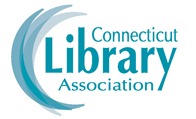Connecticut Libraries Rank 36th in State Financial Support
/The re were more than 22 million visits to Connecticut's libraries last year, with visitors borrowing 31.4 million items, according to the Connecticut Library Association. Association President Betty Anne Reiter, in testimony at the State Capitol recently, noted that although the state's libraries are among the most frequently visited in the country, the state ranks only 36th nationally in the level of state support ( $.58 per capita in CT vs. $2.94 per capita nationally). Reiter also expressed concerns, on behalf of the organization's more than 1,000 members, about recent budget cuts sustained by the Connecticut State Library.
re were more than 22 million visits to Connecticut's libraries last year, with visitors borrowing 31.4 million items, according to the Connecticut Library Association. Association President Betty Anne Reiter, in testimony at the State Capitol recently, noted that although the state's libraries are among the most frequently visited in the country, the state ranks only 36th nationally in the level of state support ( $.58 per capita in CT vs. $2.94 per capita nationally). Reiter also expressed concerns, on behalf of the organization's more than 1,000 members, about recent budget cuts sustained by the Connecticut State Library.






























